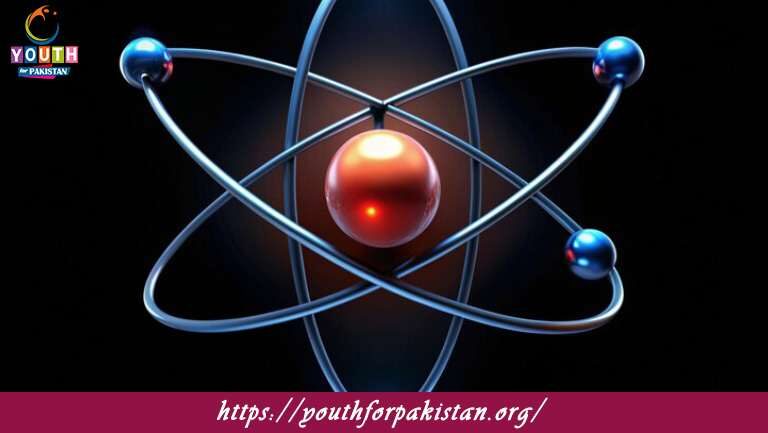9th Class Chemistry Chapter 2 MCQs with Answers

Take a deep dive into atomic structure with these 9th Class Chemistry Chapter 2 MCQs prepared by experts. Find atomic models, subatomic particles, and electron configurations in the form of quizzes in this post. Here are the questions placed before you so well-crafted that you master and test them to ace the exams. The popular keywords used here include atomic structure quiz and atom fundamentals mcq which serve a better way for learning and searching. Explore the atomic world. These detailed MCQs and answers will prepare you.
The nucleus of an atom is composed of:
a) Protons and electrons
b) Protons and neutrons
c) Electrons and neutrons
d) Protons, electrons, and neutrons
The atomic number of an atom is determined by the number of:
a) Protons
b) Neutrons
c) Electrons
d) Protons and neutrons
The particles that are located in the nucleus of an atom are:
a) Electrons
b) Protons and electrons
c) Protons and neutrons
d) Neutrons
The mass number of an atom is equal to the number of:
a) Protons
b) Neutrons
c) Electrons
d) Protons and neutrons
The total number of protons and neutrons in the nucleus of an atom is called the:
a) Atomic number
b) Mass number
c) Electron number
d) Valence number
The maximum number of electrons that can be accommodated in the first energy level of an atom is:
a) 2
b) 8
c) 18
d) 32
The second energy level of an atom can hold a maximum of how many electrons?
a) 2
b) 8
c) 18
d) 32
The electrons in the outermost energy level of an atom are called:
a) Valence electrons
b) Protons
c) Neutrons
d) Nucleons
The number of valence electrons in an atom determines its:
a) Atomic number
b) Mass number
c) Chemical properties
d) Physical properties
The electrons present in the inner energy levels of an atom are called:
a) Valence electrons
b) Protons
c) Neutrons
d) Core electrons
The maximum number of electrons that can be accommodated in the third energy level of an atom is:
a) 2
b) 8
c) 18
d) 32
The total number of electrons in an atom is equal to the number of:
a) Protons
b) Neutrons
c) Electrons
d) Protons and neutrons
The arrangement of electrons in energy levels around the nucleus of an atom is called the:
a) Atomic number
b) Mass number
c) Electron configuration
d) Valence number
The electrons in the outermost energy level are involved in:
a) Chemical bonding
b) Radioactive decay
c) Nuclear fusion
d) Electron capture
The number of valence electrons in an atom is usually equal to the:
a) Atomic number
b) Mass number
c) Number of protons
d) Number of neutrons
The maximum number of electrons that can be accommodated in the fourth energy level of an atom is:
a) 2
b) 8
c) 18
d) 32
The electrons present in the outermost energy level are the ones that participate in:
a) Chemical reactions
b) Nuclear reactions
c) Electromagnetic interactions
d) Radioactive decay
The electrons in an atom are arranged in energy levels or:
a) Orbitals
b) Shells
c) Nuclei
d) Quarks
The electrons in the inner energy levels of an atom are more tightly bound to the nucleus than the electrons in the:
a) Valence energy level
b) Third energy level
c) Second energy level
d) Core energy level
The electrons in the inner energy levels of an atom are also known as:
a) Valence electrons
b) Core electrons
c) Nucleons
d) Protons
The maximum number of electrons that can be accommodated in the fifth energy level of an atom is:
a) 2
b) 8
c) 18
d) 32
The total number of electrons in an atom is equal to the number of:
a) Protons
b) Neutrons
c) Electrons
d) Protons and neutrons
The electrons in the outermost energy level are called:
a) Valence electrons
b) Protons
c) Neutrons
d) Nucleons
The number of valence electrons in an atom determines its:
a) Atomic number
b) Mass number
c) Chemical properties
d) Physical properties
The electrons present in the inner energy levels of an atom are called:
a) Valence electrons
b) Protons
c) Neutrons
d) Core electrons
The maximum number of electrons that can be accommodated in the sixth energy level of an atom is:
a) 2
b) 8
c) 18
d) 32
The total number of electrons in an atom is equal to the number of:
a) Protons
b) Neutrons
c) Electrons
d) Protons and neutrons
The arrangement of electrons in energy levels around the nucleus of an atom is called the:
a) Atomic number
b) Mass number
c) Electron configuration
d) Valence number
The electrons in the outermost energy level are involved in:
a) Chemical bonding
b) Radioactive decay
c) Nuclear fusion
d) Electron capture
The number of valence electrons in an atom is usually equal to the:
a) Atomic number
b) Mass number
c) Number of protons
d) Number of neutrons
The maximum number of electrons that can be accommodated in the seventh energy level of an atom is:
a) 2
b) 8
c) 18
d) 32
The electrons present in the outermost energy level are the ones that participate in:
a) Chemical reactions
b) Nuclear reactions
c) Electromagnetic interactions
d) Radioactive decay
The electrons in an atom are arranged in energy levels or:
a) Orbitals
b) Shells
c) Nuclei
d) Quarks
The electrons in the inner energy levels of an atom are more tightly bound to the nucleus than the electrons in the:
a) Valence energy level
b) Third energy level
c) Second energy level
d) Core energy level
The electrons in the inner energy levels of an atom are also known as:
a) Valence electrons
b) Core electrons
c) Nucleons
d) Protons
The maximum number of electrons that can be accommodated in the eighth energy level of an atom is:
a) 2
b) 8
c) 18
d) 32
The total number of electrons in an atom is equal to the number of:
a) Protons
b) Neutrons
c) Electrons
d) Protons and neutrons
The arrangement of electrons in energy levels around the nucleus of an atom is called the:
a) Atomic number
b) Mass number
c) Electron configuration
d) Valence number
The electrons in the outermost energy level are involved in:
a) Chemical bonding
b) Radioactive decay
c) Nuclear fusion
d) Electron capture
The number of valence electrons in an atom is usually equal to the:
a) Atomic number
b) Mass number
c) Number of protons
d) Number of neutrons
The maximum number of electrons that can be accommodated in the ninth energy level of an atom is:
a) 2
b) 8
c) 18
d) 32
The electrons present in the outermost energy level are the ones that participate in:
a) Chemical reactions
b) Nuclear reactions
c) Electromagnetic interactions
d) Radioactive decay
The electrons in an atom are arranged in energy levels or:
a) Orbitals
b) Shells
c) Nuclei
d) Quarks
The electrons in the inner energy levels of an atom are more tightly bound to the nucleus than the electrons in the:
a) Valence energy level
b) Third energy level
c) Second energy level
d) Core energy level
The electrons in the inner energy levels of an atom are also known as:
a) Valence electrons
b) Core electrons
c) Nucleons
d) Protons
The maximum number of electrons that can be accommodated in the tenth energy level of an atom is:
a) 2
b) 8
c) 18
d) 32
The total number of electrons in an atom is equal to the number of:
a) Protons
b) Neutrons
c) Electrons
d) Protons and neutrons
The arrangement of electrons in energy levels around the nucleus of an atom is called the:
a) Atomic number
b) Mass number
c) Electron configuration
d) Valence number
The electrons in the outermost energy level are involved in:
a) Chemical bonding
b) Radioactive decay
c) Nuclear fusion
d) Electron capture
The number of valence electrons in an atom is usually equal to the:
a) Atomic number
b) Mass number
c) Number of protons
d) Number of neutrons
The maximum number of electrons that can be accommodated in the eleventh energy level of an atom is:
a) 2
b) 8
c) 18
d) 32
The electrons present in the outermost energy level are the ones that participate in:
a) Chemical reactions
b) Nuclear reactions
c) Electromagnetic interactions
d) Radioactive decay
The electrons in an atom are arranged in energy levels or:
a) Orbitals
b) Shells
c) Nuclei
d) Quarks
The electrons in the inner energy levels of an atom are more tightly bound to the nucleus than the electrons in the:
a) Valence energy level
b) Third energy level
c) Second energy level
d) Core energy level
The electrons in the inner energy levels of an atom are also known as:
a) Valence electrons
b) Core electrons
c) Nucleons
d) Protons
The maximum number of electrons that can be accommodated in the twelfth energy level of an atom is:
a) 2
b) 8
c) 18
d) 32
The total number of electrons in an atom is equal to the number of:
a) Protons
b) Neutrons
c) Electrons
d) Protons and neutrons
The arrangement of electrons in energy levels around the nucleus of an atom is called the:
a) Atomic number
b) Mass number
c) Electron configuration
d) Valence number
The electrons in the outermost energy level are involved in:
a) Chemical bonding
b) Radioactive decay
c) Nuclear fusion
d) Electron capture
The number of valence electrons in an atom is usually equal to the:
a) Atomic number
b) Mass number
c) Number of protons
d) Number of neutrons
If you are interested to enhance your knowledge regarding Physics, Chemistry, Biology, and Computer please click on the link of each category, you will be redirected to dedicated website for each category.





